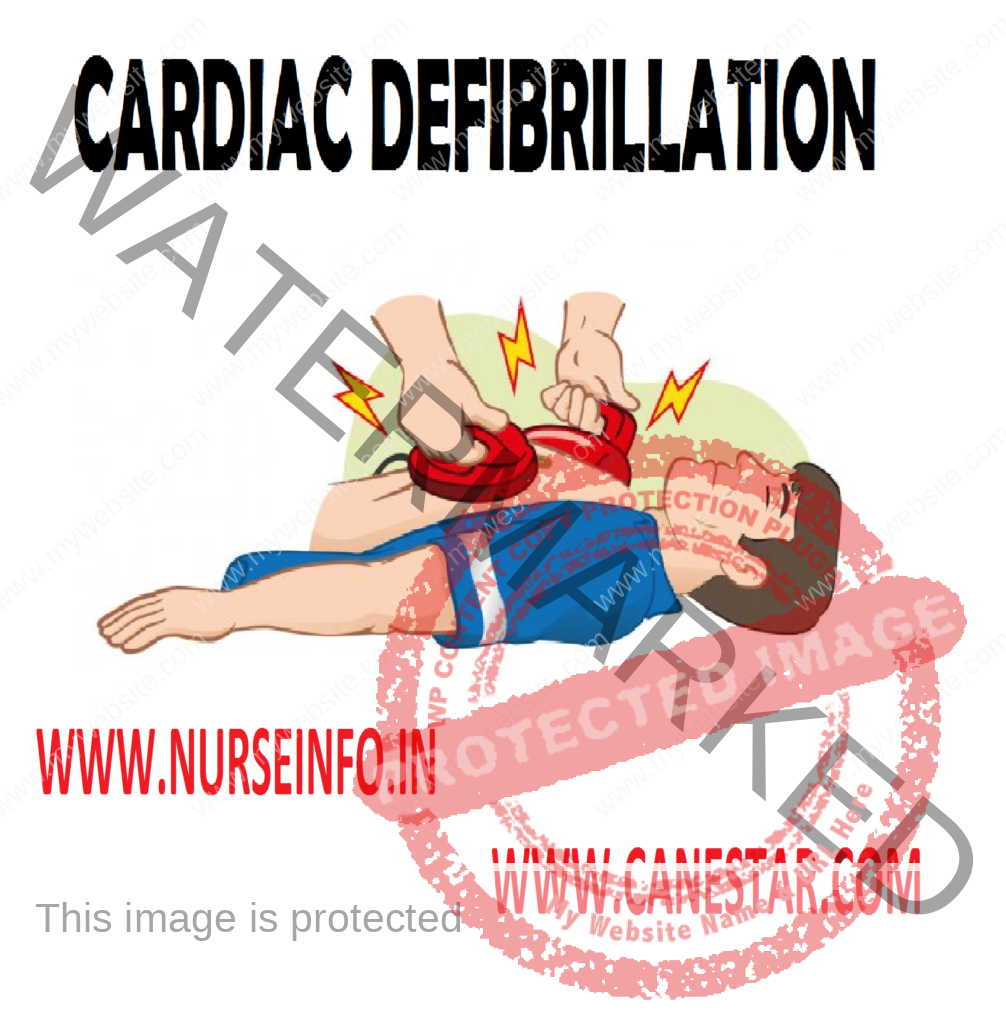CARDIAC DEFIBRILLATION – Types, General Instructions and Post-defibrillation Care
Defibrillator is an emergency resuscitative procedure in which therapeutic doses of high energy electrical shocks are given to patients to restore heart beat in cardiac arrest for pulse less ventricular tachycardia. They can be administered at any time in the cardiac cycle.
PURPOSE
To treat lethal arrhythmias such as ventricular tachycardia (VT) and ventricular fibrillation (VF)
TYPES OF DEFIBRILLATORS
Automated external defibrillators generally found in public places like airports, bus station, railway stations, offices, etc. are designed to analyze the disturbed heart rate and administer shocks accordingly. These can be operated by untrained personnel and cannot be manually overridden. The only drawback is that they take around 10-20 seconds to analyze the rhythm which can be critical.
Semi-automated external defibrillators are similar except that they can be controlled manually when operated by a trained paramedic. They can pace that heart rate. These machines have an ECG display which helps in resuscitation.
Internal defibrillators are seen in the operation rooms where they are used to restore heart beat during an open heart surgery. The paddles are placed above and below the heart and the shock is given.
Automatic internal cardiac defibrillator (AICD) is implanted under the skin in the chest area. They constantly monitor the rhythm of the heart. Upon sensing any irregularities in the rhythm, it immediately sends shocks to the heart muscles and restores normal heart rate.
GENERAL INSTRUCTIONS
Prevent potential complications while using defibrillator such as:
- Burns to the patient
- Shock to operator/other personnel
- Fire/sparks
- Arrhythmias
- Ineffective shock
EQUIPMENT
- Fibrillator unit
- Oxygen and suction source
- Emergency resuscitation equipment such as Ambu bag and mask, articles for endotracheal intubation
- Oxygen face mask, conduction jelly
- Tissue papers roll or rag pieces
PROCEDURE
Pre-defibrillation care (Preparation defibrillation)
- Explain procedure if patient is conscious
- Position in supine without any pillow for head
- Confirm ventricular tachycardia or ventricular fibrillation by checking patient’s clinical condition
- Ensure “synchronize” mode is off
- Apply adequate gel to paddies and place on chest
- Keep one paddle anteriorly at 2nd intercostals space right of sternum and another paddle laterally at 5th intercostals space to left of sternum at mid-axillary line or at cardiac apex. Ensure there is 10 cm distances between paddles.
- Select energy setting according to patient’s weight, height and level of consciousness.
- Check cardiac monitor, if life-threatening arrhythmia is still present, charge-defibrillator
- Look around and ensure no one is in contact with patient or bed
- Loudly announce “stand clear/all clear” and alert other health team members
- Discontinue oxygen inhalation to prevent fire hazards
- Defibrillate by pressing discharge buttons on both paddles simultaneously. Apply 20 to 25 pounds (10-12 kg) of pressure on each paddle
- Reassess cardiac monitor to determine rhythm and subsequent action while paddles are still on chest
- If VF/VT is still present, reset and increase energy at 200-300 joules and deliver
- If VF/VT is not revered, deliver 360 joules and reassess cardiac rhythm
- When VF/VT persist, administer emergency drugs, e.g. injection adrenaline and atropine and give CPR for one minute
- Repeat defibrillation at 360 joules for 3 times as ordered
- Discontinue procedure
- Clean and replace paddles for next use
The following steps are mandatory for defibrillation:
A defibrillator is one part of standard emergency equipment available. There are many different models of defibrillators. The nurse should be familiar with the operation of the type of defibrillation that is used in the critical care unit
- CPR should be in progress if the defibrillator is not immediately available
- The defibrillator should be turned on and the proper energy level should be selected
- Synchronizer switch is turned off
- Conductive material in the form of saline pads, electrode, gel or defibrillator gel pads are applied to the chest, where defibrillator paddles are placed. This helps to prevent burns.
- The paddles are placed on the chest wall at the third intercostals space to the right of the fifth intercostals space on the left mid-axillary line. The operator calls “all clear”, to ensure that personnel are not touching the patient or bed at the time of discharge. The defibrillator is then discharged by depressing buttons on both paddles simultaneously
POST-DEFIBRILLATION CARE
- Assess patient responsiveness/sensorium
- Check airway/breathing and circulation
- Monitor cardiac rhythm continuously and assess vital signs including BP half hourly until stable
- Maintain oxygenation
- Detect arrhythmias and side-effects of drugs used during emergency
- Provide comfort and psychological support to patient and family
- Administer analgesic as ordered if patient experiences pain over defibrillation site
- Document joules, number of shocks and response of patient
- If defibrillation is unsuccessful, explain situation to family with the help of doctor



very useful content in brief way